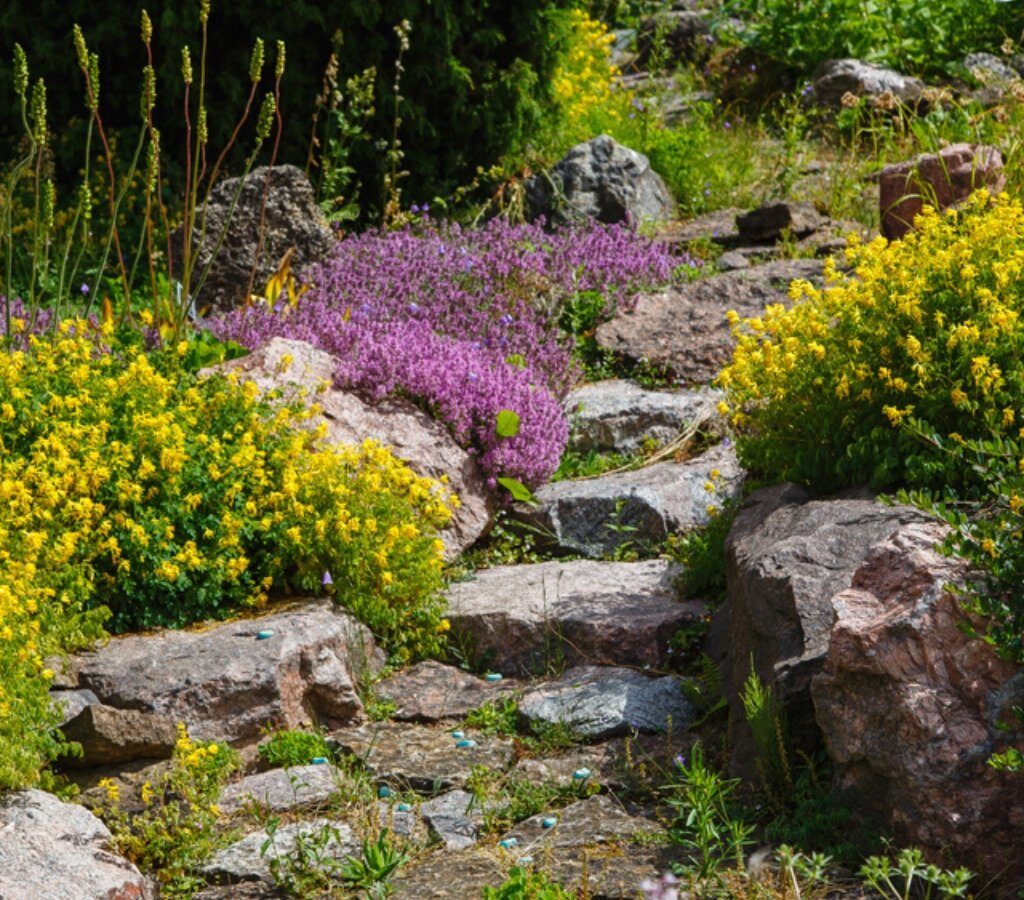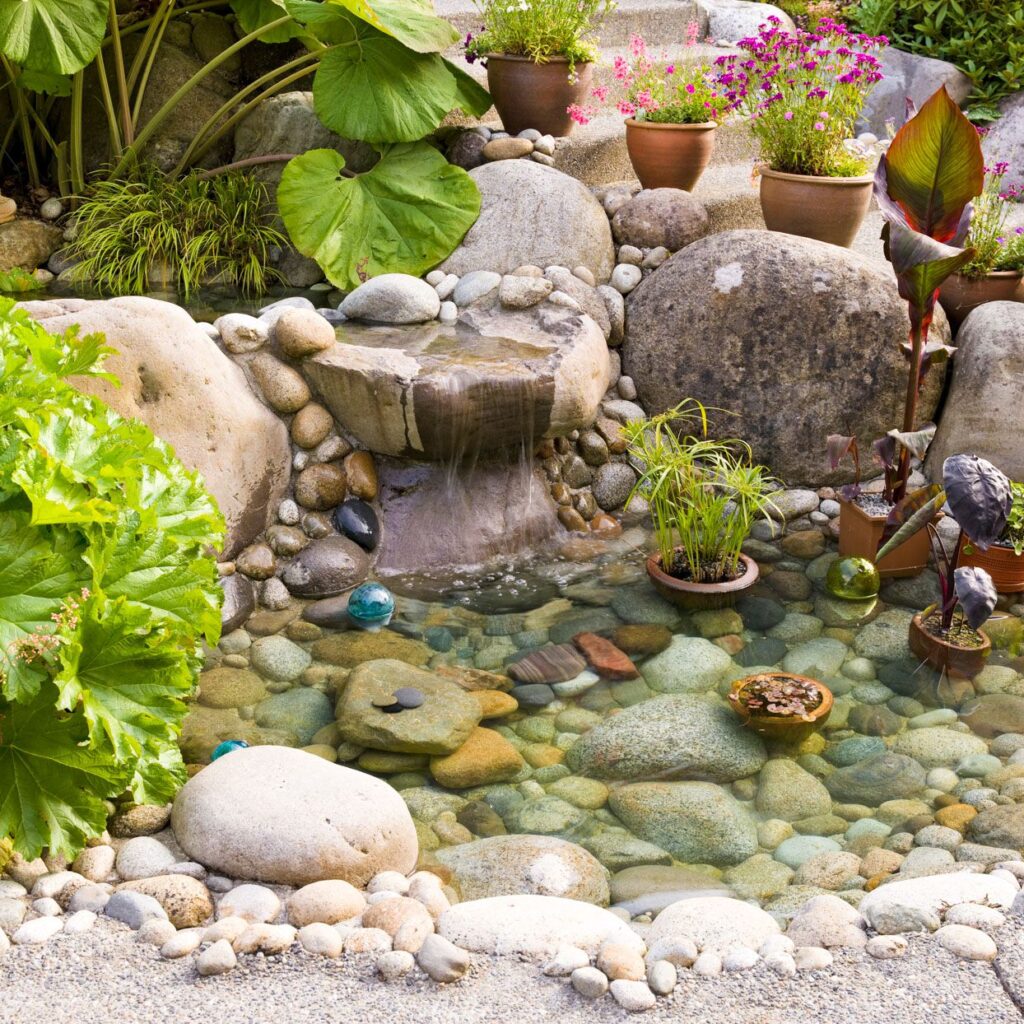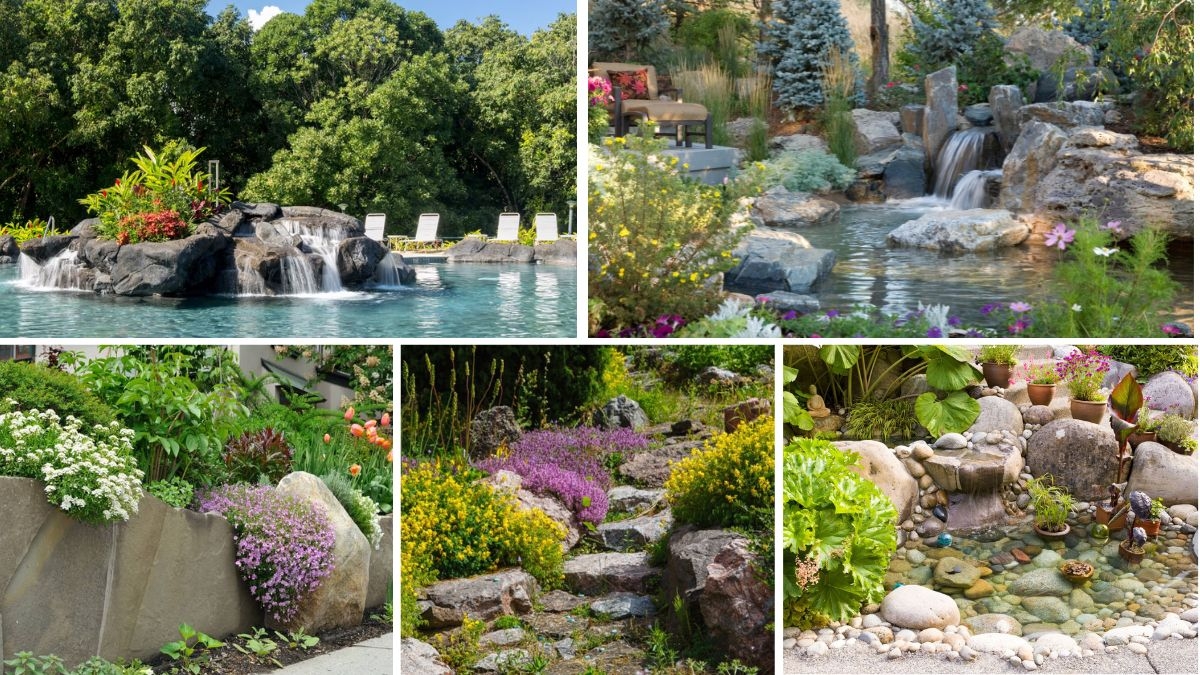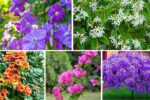Waterfall-inspired flower beds evoke the calming beauty of cascading water, bringing movement, flow, and tranquility to your garden. These beds often use tiered layouts, flowing plants, and textured arrangements to mimic the gentle descent of a waterfall. Combining visual rhythm with lush greenery and colorful blooms, they create serene outdoor spaces that encourage relaxation and contemplation. Here are five stunning waterfall-inspired flower bed ideas to transform your garden into a peaceful retreat.
1. Tiered Rock and Flower Cascade

Creating a tiered flower bed with rocks is a perfect way to emulate a natural waterfall. Arrange stones in descending layers and plant trailing flowers such as ivy, creeping phlox, or lobelia along the edges. Taller flowers like foxgloves, delphiniums, or hollyhocks can be planted at the top tier, creating a vertical visual flow. This design adds dimension and movement to the garden while providing a sense of serenity, as the cascading flowers guide the eye downward like a gentle waterfall.
2. Sloped Bed with Flowing Foliage

For a natural waterfall effect, use a gentle slope and plant cascading foliage such as ferns, hostas, or ornamental grasses. Intermix flowering plants like petunias, vinca, or begonias to add color and rhythm. The slope naturally guides the eye downward, creating a soothing, flowing effect. This style mimics the gentle movement of water and integrates seamlessly into natural landscapes, enhancing the calming and relaxing atmosphere of the garden.
3. Stone-Lined Curved Waterfall Beds

Curved flower beds edged with stones can recreate the organic flow of a waterfall. Use large and small stones along the edges and plant flowers that trail or drape slightly over the stones, such as trailing lobelia, creeping jenny, or sweet potato vines. The curved design adds softness to the garden layout and encourages a sense of movement and relaxation. Layered plant heights and textures amplify the cascading effect, giving the garden a harmonious and visually soothing appearance.
4. Vertical Planter Waterfall Beds

Vertical planters or raised shelves can create a compact, cascading waterfall effect for small spaces. Plant trailing and layered flowers such as fuchsias, ivy geraniums, or nasturtiums in staggered vertical positions. The flowers spill gracefully from one level to the next, imitating the motion of falling water. This design is perfect for patios, terraces, or narrow garden areas, adding a unique focal point that combines beauty, structure, and a relaxing visual flow.
5. Mixed Rock and Water Feature Flower Bed

Integrating a small pond or stream with a rock garden enhances the waterfall effect in your flower bed. Surround the water with cascading plants like creeping thyme, lobelia, or sweet alyssum, and taller blooms like lilies or irises at the upper edge. The combination of flowing water, textured stones, and trailing flowers creates a multisensory experience—sight, sound, and texture—all contributing to a peaceful, relaxing garden environment reminiscent of a natural waterfall.
Waterfall-inspired flower beds combine structure, movement, and lush plantings to create tranquil and visually captivating gardens. Whether tiered, sloped, stone-lined, vertical, or combined with a water feature, these beds evoke the serenity of flowing water. By using cascading plants, layered textures, and rhythmic arrangements, you can design a garden that is both relaxing and stunning, offering a natural retreat that soothes the mind and delights the senses.





Leave A Comment